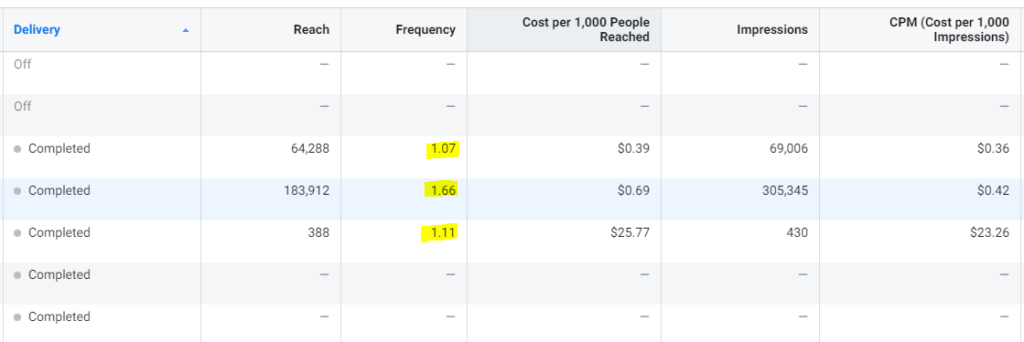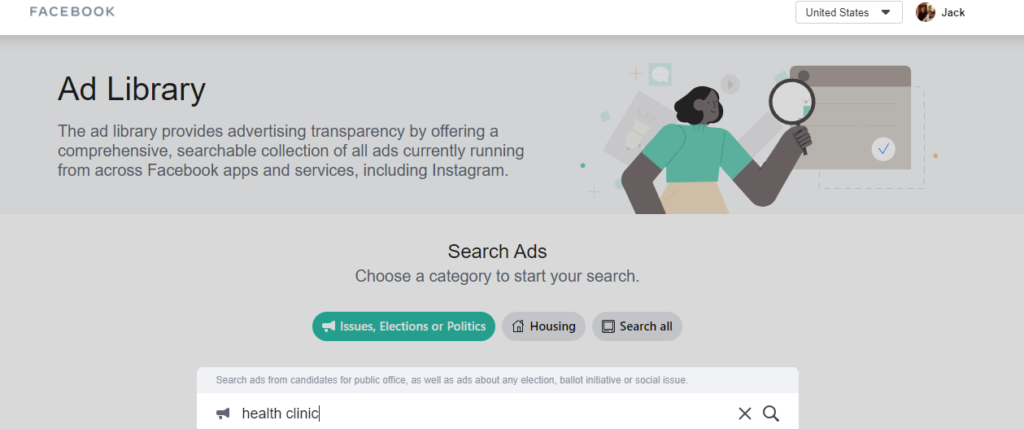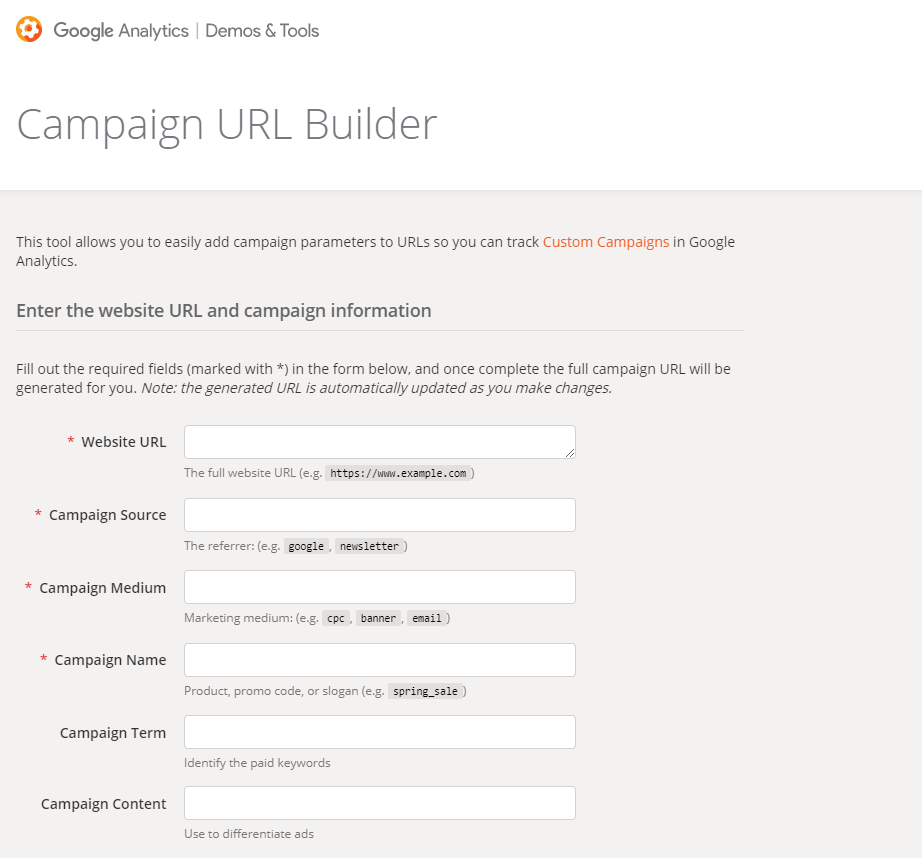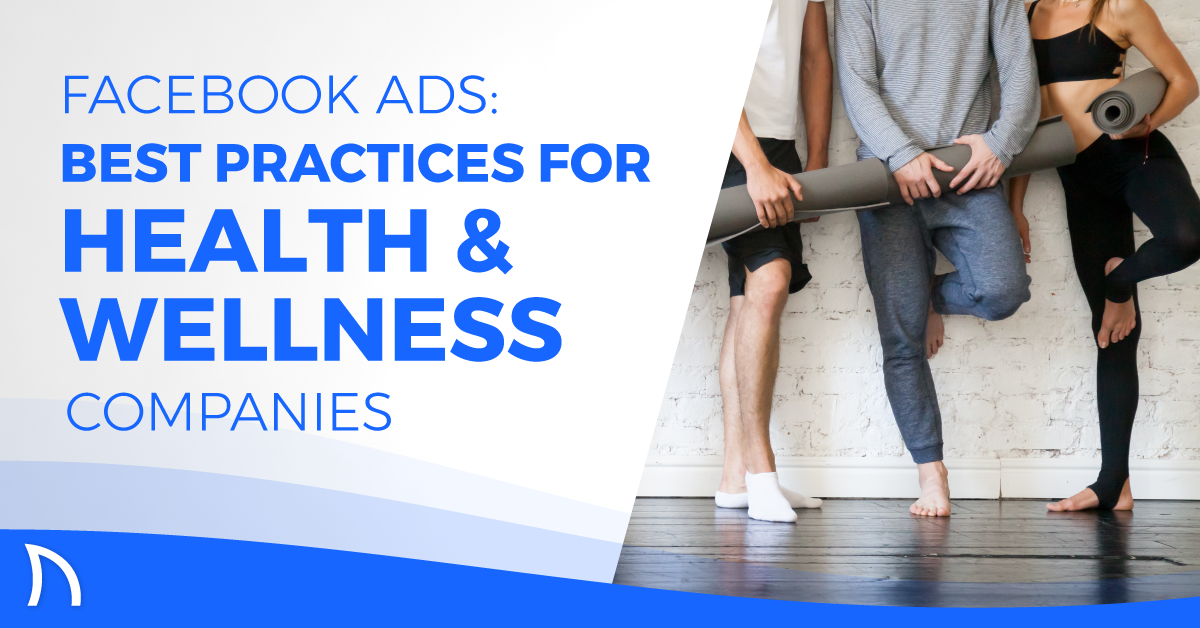Facebook Ads: Best Practices for Health & Wellness Companies
I’m not sure it would have been possible to script up a more challenging year for businesses in the health & wellness industry. A global pandemic has thrown a wrench into everything from appointment scheduling to providing treatment, and for many in the industry, there is great uncertainty about how things will look in the next several months. As a result, health & wellness companies are forced to re-look at their advertising budgets and the mediums that have historically been used to drive in new leads and increase their visibility for potential patients. From our experience, we’d advise Facebook Ads as a great option for companies wishing to get their messaging out and generate new interest.
Why?
Facebook’s usage statistics continue to climb and it’s also one of the most cost-effective forms of advertising across the whole gamut of digital and traditional media. Stats from SproutSocial suggest that 1.62 billion users visit Facebook daily and the average cost per click is around $1.72 when measured across all industries. Furthemore, it’s one of the best ways for you to implement a direct call-to-action (i.e. “Contact us to learn more!”) that can be executed immediately by the ad viewer. Thus, it’s a great option for lead generation and increasing your sales pipeline.
For those who aren’t as well-versed in digital advertising on Facebook or Instagram, launching a successful Facebook Ads strategy can be an uphill battle. However, our team has had a great deal of experience in getting campaigns launched, optimized, and converting for businesses in the health & wellness industry and we wanted to take some time to talk through it with you. In addition to sharing a few of our best practices, we’ll also discuss a case study from a real customer whose business we’ve helped grow through Facebook advertising. Get your notebooks ready – it’s time to dive in!
Case Study: Facebook Ads for a Health Services Co.
Our team of digital marketers have had the opportunity to assist over 165 different clients with their PPC strategies since 2013; one of the most rewarding client journeys was with a group that runs multiple hospitals and nursing homes across a couple of states. Though this team had a good handle on their organic social media, they hadn’t yet put too many resources towards their paid social plan. Instead, they looked at our digital marketing agency to help increase their visibility and grow their leads.
Instead, they looked at our employees to develop and execute a Facebook Ads strategy that could help increase their visibility and leads. The strategy involved us running both brand awareness ads and recruitment ads. On the brand awareness ads, we showed testimonials from current customers and employees of the business, let potential customers know that there are several facilities across the state, and wanted to educate potential users about their facilities. On the recruitment side, our main goal was to drive applications for various job positions across their organization.
Since the start of 2020, we’ve driven over 670,000 impressions on our ads, had almost 7,000 link clicks, and generated 75 conversions for their business, all while operating within a relatively slim budget (~$300/month). The success with this case study, in part, is what prompted us to write this blog and encourage other health & wellness organizations to consider Facebook as a cost-effective medium for promoting business and converting marketing goals. Through the rest of this article, we’ll discuss some of the best practices in launching your Facebook Ads strategy.
Best Practice #1: Implement GIFs or Animations
Whether you’ve been involved in digital marketing for fifteen years or fifteen minutes, I’m certain that you know video is a trending topic and one of the best ways for your business to draw more attention for your ads. However, videos come at a large expense whether you’re outsourcing the work or having them produced internally (with equipment overhead & labor involved). While flat images can fail to capture the same level of attention as videos, there is a great “in-between” method of creating GIFs or animated ads that play as short loops and earn you more views & engagements.
In the healthcare & wellness industry, an example of this would be creating an animated ad for a hair loss clinic. Perhaps you are trying to increase education about laser hair therapy, and can produce a quick animation to describe how this works, while also having a call-to-action on the ad for interested parties to “learn more.” Compare this with a different ad that simply has a still image of the laser hair treatment + body content, and you’ll notice a sizable difference in impressions for the animated option. To learn more about animated Facebook Ads, please feel free to contact us.

Best Practice #2: Try Using Lookalike Audiences
Bob has been a wonderful client for you. He matches your ideal target audience, always shows up with a smile, and pays his bills right on time. Haven’t you ever thought to yourself, “man, if only every client could be as great as Bob?” Well, with Lookalike Audiences, you can get pretty darn close. Creating Facebook Ads that target a Lookalike Audience is a great way to reach new people who are similar to existing customers. Facebook is able to identify demographic information and interests of people on your site, your mobile app, or your Facebook page, and deliver ads to this custom audience. You can also get more granular with targeting on ads by only serving them to specific geographic locations or demographic sets.
If you have any sort of mailing list or prospecting list, it can be a goldmine for creating a Lookalike Audience on Facebook. You’re able to upload a .txt or .csv file, or copy and paste information, and reach contacts that are similar to those on the list. For example, if you run the digital marketing department for a vitamin company and have a successful healthy lifestyle newsletter, you’re able to take that list of contacts from Mailchimp, Constant Contact, or another platform, download it, and reupload as a csv in Facebook to start finding more of an audience that matches your target market. We talk a little more about lookalike audiences in this blog.

Best Practice #3: Learn How to Retarget Effectively
Coincidence doesn’t exist in the world of internet marketing. If you are served an ad online for a pair of shoes that you looked at a couple of weeks ago, it’s not a sign from the universe that you need those shoes (note: this message is for my significant other). Digital advertisers know the importance of retargeting to website visitors, because if somebody has explored your products or services before, they’re more likely to visit again. In fact, statistics from 99Firms show that the average click-through-rate for retargeting ads is 10X that of display ads. If you don’t have Facebook Pixel set up on your website so you can begin your retargeting efforts, you’re missing out big time.
In the world of lead generation (which most health & wellness companies find themselves in), there are a lot of ways that you can improve your conversions for previous website visitors. One of the best ways is to target individuals who visited your “Contact” page but did not convert (didn’t make it to the ‘thank you’ page after filling out a form). Another way to retarget more effectively is to look at when the audience last visited your page. You know your industry and your sales cycle better than us, but is an audience who viewed your site 1 day ago more likely to convert than 1 week ago, or 1 month ago? Getting to understand the customer journey is an important step to retargeting with confidence. Here are a few more strategies for remarketing that may be beneficial to you.
Best Practice #4: Monitor Your Ad Frequency
Every time you see the same ad and get annoyed by it, a Facebook advertiser somewhere has failed to do his job. Monitoring your “ad frequency” (or, the average number of times users see your ad) is an important step in making sure that you keep your content relevant and are not inundating the same audience with the same imagery. If your ad gets seen too often and it prompts a user to report it, you may risk your relevancy score dropping and your whole campaign being impacted.
There’s some grey area on what an appropriate frequency number is, but Facebook typically suggests that frequency numbers should be less than or equal to 2 in order to remain relevant. If you’re somewhere in the 3-4 range for your ad frequency, you may be at risk of your ad’s performance dropping quickly. If you spot your ad frequency numbers on the rise, you should consider setting up frequency rules, optimizing your targeting, creating custom audiences, adjusting your budget, and other ways to curve it.

Best Practice #5: Keep an Eye on Your Competition
Gone are the days of purchasing magazines or driving past billboards just to see what your competitors ads look like. With Facebook, it’s never been easier to watch your competition and how they’re crafting their messages by accessing Facebook Ad Library. This is a place where you can search for ads that are running across Facebook/Instagram by entering in a Facebook Page Title or other keywords. (Note: you will only see currently active campaigns, not past ones).
Though you never want to steal or emulate ad ideas from your competition, it is nice to keep a watchful eye on what others are doing so that you can better tailor your own ads to your target audience. For example, if you’re a Denver-based medical clinic and have been thinking about running Facebook Ads, it may behoove you to look at some other hospitals and medical operations in the area to see how they’re using Facebook to advertise.

Best Practice #6: Track More Accurately With UTMs
The world of digital marketing is littered with acronyms. Here’s another that you may or may not be familiar with: UTM. “Urchin Traffic Monitor” codes (named after Urchin Tracker, a web analytics software that served as the base for Google Analytics), are used to derive the most accurate tracking for where your audience is coming from. You can create your own UTM links that, when clicked (for example, on a Facebook Ad), will relay accurate information to Google Analytics that describe how people are getting to your website. Since there is sometimes a difference between what Facebook and Google are reporting, we advise always implementing UTM links on your Facebook Ad campaigns for the most accurate tracking.
UTM codes ordinarily have three (but sometimes more) parameters involved: source, medium, and campaign. If you visit Google’s Campaign URL Builder, you’ll be able to enter the URL you wish to drive people towards, and come up with source, medium, and campaign name fields that will allow you to better identify how people are getting to said URL. It’s a free and easy-to-use tool that will do wonders for your digital marketing efforts; namely, when it comes to being able to track and accurately report how a Facebook Ads campaign performed.

Best Practice #7: Start Warm
Before describing this ‘best practice,’ I think it’s important to note the difference between a warm audience and a cold audience. Warm audiences already have a connection to your business in some capacity – either they’re on a subscription list, have liked your Facebook Page, or have visited your website and know who you are. A cold audience, on the other hand, is in your target market (they match demographic, interest, or lookalike fields) but they have not yet interacted with your company. It’s not earth-shattering to claim that warm audiences have a better chance of engaging with your ad than cold audiences.
However, a tactic that you may not have considered is approaching your warm audience first (to get some early engagement numbers) before boosting the post to a cold audience. If someone comes across an ad and sees high engagement numbers, they’re more likely to engage with it themselves (scanning the likes, comments, etc.). An example of this strategy would be boosting a post for an article titled “8 secrets to weight loss from a registered dietitian.” By first boosting this to people who have liked your page or visited your website, and later boosting it to people who match your target demographic, you may notice higher engagement numbers and more leads being drawn from this ad than if you just went straight to the cold audience. Starting warm is a great way to earn some early engagement, but for more tips on targeting custom audiences, please feel free to read this article.
Best Practice #8: Entice Prospects With a FREE Offer
We can talk all day about targeting your audience and tracking your results, but all of it’s for naught if you don’t have a compelling pitch for them to learn more. If you’re able to do any form of a discount or free offer on your ad, it can be a great way to entice a prospect to follow your CTA.
Let’s say your chiropractic office has been struggling to get new clients in the door. Referral programs and business trade shows have driven a little bit of interest, but you’re hoping to reach an entirely new audience in your community to come visit. So, you’ve determined that you’ll run some Facebook Ads and target custom audiences that fit your target demographic. In order to get them to actually come in and visit, consider running an offer of “FREE MRI X-Ray Reading” to hook an audience in and get them to fill out a contact form. A specific offer that gets your audience to bite after you’ve reached them is the ultra-important step each Facebook Ad Campaign should take into consideration.

These eight tips are great to keep in mind as you get started on your Facebook Ads, but you will likely learn a lot more about how to get your unique messaging in front of qualified leads by simply diving in and starting to work through it. If you are in need of any assistance along the way, we’d be happy to talk to you about developing a paid social strategy that works for your business. Feel free to reach out to our team to learn more. Thanks for all you do, as members of the health & wellness community, to keep us functioning. We’d be honored to have an opportunity to return the favor.
Ready To Grow?
Let's Talk!


